- Home
- Terry Brooks
The World of Shannara Page 9
The World of Shannara Read online
Page 9
Federation Army
The Coalition Council created the Federation army by combining the separate militias of member cities and towns into a single standing army. The consolidation was inspired by the War of the Warlock Lord but did not gain momentum until the threat of the Shadowen loomed over the Southland. In only a few years, it went from a ragtag group of regional militias to the largest and best-trained army in the Four Lands. It was the first and only army to have uniforms, all in silver and black, for all of its soldiers, as well as a strict policy of discipline and decorum.
The regular Federation army marched under a banner with a red stripe and a white stripe across a field of black. Its ranks included infantry, cavalry, and siege divisions. The infantry included archers and swordsmen, both drilled to fight in formation, both armed with short swords, shields, daggers, and in some cases spears. The cavalry was divided into heavy cavalry and light cavalry. Both infantry and cavalry wore mail armor under their uniform surcoats. The smallest unit in the army was a patrol, which became part of a squad, and that part of a company.
The Seekers, no longer in existence, marched with the army, but under their own banner, which displayed a white wolf’s head. They were the special forces, controlling creepers and other specialized offensive weapons.
The first job of the Federation army was to enforce the consolidation of the Southland by encouraging the Borderlands to become a protectorate. But the first real test of the army was the invasion of the Eastland. Though well drilled and equipped, the army faced a determined foe in the Dwarves, one who used unorthodox methods and utilized the rugged nature of the Eastern wilderness to great advantage. The poorly equipped and outnumbered Dwarves held the Federation army at bay for five years. In the end, it was the Seekers with their creepers, not the might of the finest army in the lands, that broke the Dwarves’ resistance and ended the Federation-Dwarf war.
The army was almost victorious in its campaign against the badly outnumbered Westland Elves, until the Shadowen that made up a large part of its officer corps were burned where they stood on the field of battle. Demoralized, the army broke and left the field. The war ended soon after.
In the last century, new divisions have been added to the regular army with the development of the airship. Airship crews are considered part of the regular army but follow a different set of protocols than do those soldiers who fight on the ground. Airships that are crewed or commanded by Rover mercenaries fight as part of the Federation army but do not follow its standards of protocol or wear its uniform.
The new branch of the army has increased its fighting potential, but for the first time, the army is facing an enemy of nearly equal numbers and similar skills.
Once certain that Federation rule was unquestioned in the South and West, the council turned their attention to the Dwarves and the Eastland. They claimed the Dwarves had aided the Borderlands during their resistance and deserved to be punished. The charges were ludicrous, but there was no one to help the Dwarves challenge them. The Elves were gone. There were no Druids. Even Paranor was gone. The paltry remains of the Border Legion were now a part of the Federation, save those few hardy souls who joined the Dwarves, believing more in justice than in survival.
Shadowen Creepers
During the Federation Wars of expansion, a new twist on an Old World war machine wreaked havoc among the Federation’s enemies. Called creepers, they resembled the huge war machines used in the Great Wars with one major difference—they were alive.
Morgan Leah wrote of his first sight of a creeper: “It was an apparition composed of the worst bits and pieces of things scavengers might have left. There were jagged ends and shiny surfaces, iron grafted onto flesh, and flesh grown into iron. It had the look of a monstrous, misshapen crustacean or worm, but was neither.”
The creepers were a combination of Old World technology and Shadowen magic. Some of the original creepers are believed to have survived the Great Wars, rebuilding themselves with spare parts and, occasionally, living tissue. The Shadowen knew of the creepers, possibly through covert contact with the creeper at Eldwist. They managed to locate a few that were still functional and enhanced them with grafted flesh and Shadowen magic. The resulting creatures combined the most fearsome aspects of machine and monster. The magic gave them life and made them almost invulnerable. By the time of the invasion of the Westland, the Shadowen apparently learned how to make creepers from scratch, ending their reliance on Old World machinery. It is now suspected that the creatures were made and housed at Southwatch.
The new magic-enhanced creepers were huge creatures, sometimes over thirty feet tall, who could scale almost any surface or penetrate almost any defense. Most had clawed feet and pincers or mandibles. They killed by tearing their victims apart. The last known creepers within the Four Lands disappeared after the Shadowen War.
The outcome was a foregone conclusion. The Dwarves had no standing army, while the Federation army was the largest and best-trained in the known world. The Dwarves were forced into a purely defensive war as the Federation juggernaut rolled almost unchallenged over the towns and cities of the Eastland. Entire populations were taken prisoner and sent to the mines in the South. Escaping Dwarves abandoned their cities for the rugged terrain of the high country. They discarded standard military tactics in favor of guerrilla actions. The Federation, though far superior in numbers and armament, was unprepared for a war of this type, and it paid a heavy toll for control of Dwarf land. In the end the Federation needed five bloody years to defeat the Dwarves and drag them down from the mountains. It took the use of creepers, unstoppable monstrous creatures of machine and living flesh combined, to totally destroy the Dwarf nation. The few Dwarves who managed to escape fled to the North, where they, along with some Gnomes and a handful of dissenting Men, established an ongoing resistance movement.
Dwarf prisoners of war as well as any related malcontents were sent to work camps in the South as mine laborers. Few survived. It was a terrible chapter in the history of the Southland, yet most Southlanders had no idea that such work camps existed.
The Gnomes, who had watched the Federation’s ruthless campaign against the Dwarves, surrendered their territories without a fight. With the last serious threat to their authority in the East removed, the Federation claimed the Eastland as a willing protectorate. Their control officially extended everywhere in the Four Lands except the Northland. They even claimed the valley of Paranor, since Paranor itself was no longer there.
The Northland remained unaffected only because the Federation command realized that facing the might of the Trolls on their own forbidding turf would be far more costly than the Dwarf campaign, with nothing of value to be gained. The Trolls were willing to ignore the Federation so long as the Federation returned the favor. The council, still recovering from its surprise at the strength of the Dwarves’ resistance, was not difficult to convince. As far as they were concerned, Federation control now extended to all of the known world that mattered. The Four Lands were now two: the Federation and the northern wilderness.
To mark the unification of the greater portion of the Four Lands under Federation rule and to honor those who had fought so hard to achieve it, the Federation constructed a great tower fortress on the northern edge of the Rainbow Lake. The great black monolith was named Southwatch.
“This fortress will forever reassure the people of the world of the benevolent protection of the Federation and of the strength of the Race of Man,” the Coalition Council leader announced at its completion. To most of the citizens who saw it, however, the looming black tower was anything but reassuring.
Over the next sixty years, the Federation tightened its grip on the lands until the strength of that grip began to crush the people. The thriving trade the Federation had originally promised diminished to the lowest levels ever recorded. Taxation increased until many families and townships lost their homes and lands to the council’s tax collectors. Within the protectorates, poverty was commonplac
e. Life was especially hard in the Eastland, where the Federation government seemed determined to wipe out the remains of the Dwarf Race.
Even the land itself seemed to sicken. Plagues and failing crops became commonplace. It seemed that only the council and the Federation army remained strong. The sole threat to complete Federation domination came from the members of the still-active resistance movement, now calling themselves the Free Born, who were hiding in the mountains to the north. The council knew that the Free Born themselves were not strong enough to contest Federation rule, but they were in negotiations with the Rock Trolls, who could be a serious threat if they decided to abandon their neutrality.
The council’s position was complicated further when, almost exactly a hundred years after the Federation claimed the abandoned Westland, word came that their claim was contested. The hated Elves had returned. The Federation army, which had been focused on eradicating the resistance, now mobilized its might to destroy the Elves.
The resulting war lasted only months, but its brutality was unmatched since the Second War of the Races. As before, the result seemed preordained. The Elves, led by a daughter of Shannara, were joined at the end by the Free Born and the Rock Trolls, but the Federation had Seekers with strange powers, and their invincible creepers.
Unknown to most of the combatants, the war had a hidden front, for the Shadowen the Federation had warned about did indeed exist—within the Coalition Council itself. Southwatch was the source of their power, not the Elven Westland. The Seekers, who were charged with protecting the people of the Southland from old magic, were themselves Shadowen creatures who were slaves to that magic.
The assault on Southwatch, led by the Druid Walker, eradicated all Shadowen and Shadowen-spawned creatures from the land in a terrible conflagration. The effects reached far enough to decimate the Southland army in the field at the Valley of Rhenn. It destroyed all those touched with stolen magic, including the creepers. The remaining soldiers fled the field leaving the day and the battle to the Elves and their allies.
Southwatch
On the north bank of the Rainbow Lake, where the waters of the Mermidon poured through the edge of the Runne Mountains, a monolithic fortress was erected to celebrate the unification of the Three Lands under Federation rule. Christened Southwatch, the looming black tower became the symbol of Federation domination and oppression. Its name, as well as its placement, seemed intended as a reminder that the people of the land were under the eye of the Federation.
The construction of Southwatch was legislated by Rimmer Dall, then the most powerful man in the Coalition Council. Dwarf labor gangs performed the actual work, and Dwarf blood colored the mortar. The keep was built of black granite so skillfully joined and polished that it had the look of obsidian. When complete, the main tower rose malevolently over two hundred feet above the surrounding countryside. The tallest single building in the Four Lands, it could be seen from many miles distant, thrusting into the sky like a blackened stake. Even stonemasons and engineers marveled at its height. They said it was too tall to stand, especially given the narrow base and the limitations of the materials. But stand it did, for almost a century. One local stonemason claimed it was growing still taller. He spent years measuring and observing the tower from a distance, and claimed he had proof that the tower had increased significantly in size despite the fact that construction had ceased decades before. The man disappeared a few weeks later.
Used primarily as the official headquarters for the Seekers, Southwatch also housed a staff of workers, a full garrison of Federation soldiers, as well as an unknown number of creepers, yet to casual observers the keep appeared nearly deserted. Most of the activity was hidden behind the high walls of the courtyard. The upper levels of the Tower were used as quarters and offices for the Head Seeker and his men, as well as the occasional important guest—or prisoner. The apex of the tower contained a series of small irregular chambers, only ten to fifteen feet across, set into a maze-like configuration. These rooms had no actual doors, only entranceways, and were forbidden to any but the Seekers. The rooms at floor level and just above were larger and were primarily used to house the men in the garrison and the staff.
As tall as it was above the ground, the building burrowed equally far into the earth below, extending downward to end in a large pre-existing cavern that groundwater had hollowed out of the stone. The lower levels contained lairs for the creepers, storage areas, and a dungeon with cells for prisoners. The lowest level was usually heavily guarded.
Even before it was completed, the local inhabitants noticed disturbing changes in the land around the fortress. Previously fertile farmland refused to yield crops. The usually bountiful waters of the Rainbow Lake were devoid of fish. Even the hardy plains grasses began to shrivel.
Morgan Leah wrote of Southwatch, “It loomed over us, immutable and fixed, the blackest dream that sleep had ever conjured, a thing of such evil that the act of viewing it was enough to poison the soul. I could feel it breathing and watching and listening. I could feel its life.”
In actual fact, we now know that Southwatch was alive, and was draining the life magic of the land to feed the Shadowen. Morgan Leah was among the small force led by Walker Boh that breached the Tower’s defenses to confront the Shadowen and free the magic. They were the only survivors of the battle that ended with the violent destruction of Southwatch. The resulting pillar of fire and ash was seen as far away as Tyrsis and Varfleet.
On the site where Southwatch once stood, there is now only scarred rock and earth. The rubble smoldered for days, but when the last embers went out, there was nothing left of the great black tower, or of the Shadowen who had controlled it and the Southland for almost a century.
The war with the Federation did not end despite their defeat at the Rhenn, but without the power of Southwatch and the Shadowen involvement, the Southlanders were no longer the impervious force they had been. After a few more pitched battles that ended in defeat for the Federation, the Southlanders withdrew. Several members of the Coalition Council itself had also died horribly at the moment of Southwatch’s destruction. They had been the members most intent on pursuing the war. Lacking their influence, the council questioned the wisdom of continuing the war. They finally decided to call the army back to the Southland and leave the Westland to the Elves.
The Borderlands, which had chafed under Federation rule, used the Southland’s defeat in the West as a call to arms. Padishar Creel, leader of the Free Born resistance, instigated and led a revolt that drove the Federation from the Borderlands.
The Dwarf resistance also found new vitality, rising against their disillusioned Federation masters. Both these uprisings, coming as they did on the heels of such costly losses in the Westland, created a growing dissatisfaction in the South with the whole program of expansion. After a few months of token resistance, the Federation abandoned the outlying land completely.
It is unclear if the Men of the Southland ever realized that they had been used as pawns for the second time in their history against their fellow Races. There is no doubt that the aftermath marked all the Races for generations.
Unfortunately, the Federation never completely gave up its desire to expand. For several generations there was peace. But Southlanders, especially those who ruled the council, still spoke of the Borderlands as a lost protectorate that must one day be reclaimed. Eventually the plan became more than talk, and almost one hundred years after they had been driven back to the Southland, the Coalition Council again attempted to take over Callahorn, declaring war when Callahorn refused.
The Borderlands, home of the Free Born, had not forgotten the harsh lessons learned under Federation rule. The Free Born met the attempted invasion head on, their ferocity against the greater numbers of the Federation force a testament to the courage of the Borderlands people. They still might have failed, faced with the Federation’s ability to field large numbers of troops, but they were joined by the Dwarves and Elves, who were equally det
ermined to keep history from repeating itself. The Dwarves had especially bitter memories of the Federation under the Shadowen, for their Race had been decimated. Together they formed the Southland Coalition.
After eight years of harsh fighting, the Free Born and their allies managed to halt the Federation advance below the Duln. For several years the two armies have mercilessly pounded each other across a stalemated front along the broad expanse of the Prekkendorran Heights—neither side gaining ground, both paying an alarming price in men and equipment.
Of all the conflicts fought since the Great Wars, including this latest Federation-Free Born War, the Southlanders officially participated in only three. In all three they were the aggressors, though they were proven to be pawns of other forces in the First War of the Races and the Shadowen War. But if there is something within the Race of Man that makes him predisposed to domination and manipulation, there is also something inherently noble that often reveals itself in the most unlikely places.
Many great heroes throughout history were Southlanders. Names such as Ohmsford and Leah were involved on the side of truth in almost every conflict since the Second War of the Races. The Druids Bremen, Allanon, and Walker Boh were all born within the South. Many other Southlanders whose names have been lost fought and died to stop the aggression of their brothers. Their sacrifices are as much a part of the Southland’s history as any of the tales of Federation oppression. Theirs is often believed to be the true spirit of the Southland.
The Southland:
Cities of the Southland
The survivors of the Race of Man fled south after the war, rebuilding the homes and cities that were lost, trying to create life, rather than destroy it. —Shea Ohmsford

 The Talismans of Shannara
The Talismans of Shannara The Sword of Shannara: The Druids' Keep: The Druids' Keep
The Sword of Shannara: The Druids' Keep: The Druids' Keep Witch Wraith
Witch Wraith The Elf Queen of Shannara
The Elf Queen of Shannara The Weapons Master's Choice
The Weapons Master's Choice The Scions of Shannara
The Scions of Shannara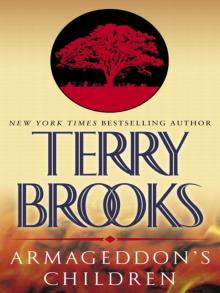 Armageddon's Children
Armageddon's Children The Sword of Shannara Trilogy the Sword of Shannara Trilogy
The Sword of Shannara Trilogy the Sword of Shannara Trilogy The Darkling Child
The Darkling Child The Black Unicorn
The Black Unicorn The High Druid's Blade
The High Druid's Blade Wards of Faerie
Wards of Faerie The Tangle Box
The Tangle Box The Black Elfstone
The Black Elfstone The Black Irix
The Black Irix The Elfstones of Shannara
The Elfstones of Shannara The Magic Kingdom of Landover Volume 2
The Magic Kingdom of Landover Volume 2 Bearers of the Black Staff
Bearers of the Black Staff Jarka Ruus
Jarka Ruus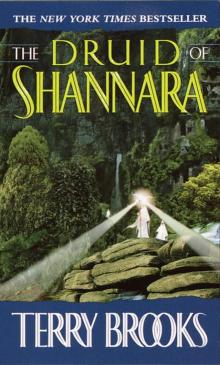 The Druid of Shannara
The Druid of Shannara The Sword of Shannara
The Sword of Shannara The High Druid of Shannara Trilogy
The High Druid of Shannara Trilogy Angel Fire East
Angel Fire East The Gypsy Morph
The Gypsy Morph The Wishsong of Shannara
The Wishsong of Shannara Magic Kingdom for Sale--Sold
Magic Kingdom for Sale--Sold Running With the Demon
Running With the Demon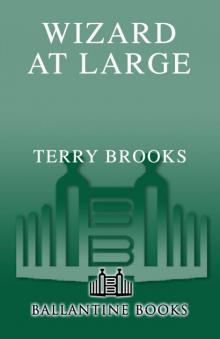 Wizard at Large
Wizard at Large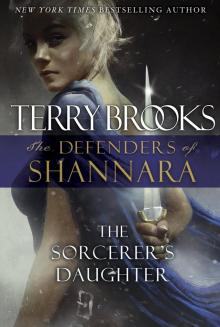 The Sorcerer's Daughter
The Sorcerer's Daughter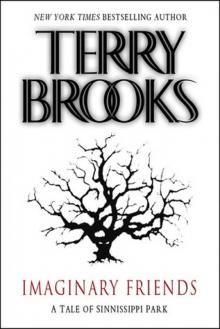 Imaginary Friends
Imaginary Friends The Elves of Cintra
The Elves of Cintra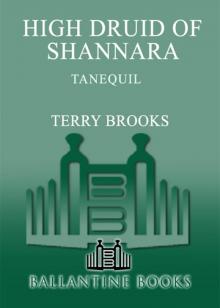 Tanequil
Tanequil Witches' Brew
Witches' Brew The Sword of the Shannara and the Elfstones of Shannara
The Sword of the Shannara and the Elfstones of Shannara The World of Shannara
The World of Shannara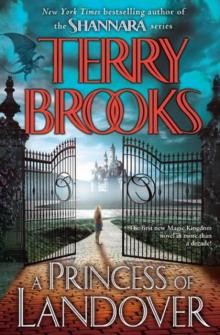 A Princess of Landover
A Princess of Landover A Knight of the Word
A Knight of the Word Straken
Straken The Skaar Invasion
The Skaar Invasion The Measure of the Magic: Legends of Shannara
The Measure of the Magic: Legends of Shannara Ilse Witch
Ilse Witch Bloodfire Quest
Bloodfire Quest The Stiehl Assassin
The Stiehl Assassin Antrax
Antrax The Last Druid
The Last Druid Paladins of Shannara: Allanon's Quest
Paladins of Shannara: Allanon's Quest Sometimes the Magic Works: Lessons From a Writing Life
Sometimes the Magic Works: Lessons From a Writing Life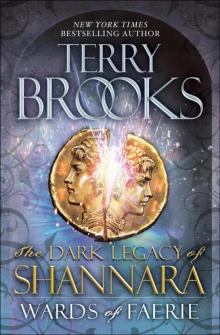 Wards of Faerie: The Dark Legacy of Shannara
Wards of Faerie: The Dark Legacy of Shannara Indomitable: The Epilogue to The Wishsong of Shannara
Indomitable: The Epilogue to The Wishsong of Shannara Heritage of Shannara 01 - The Druid of Shannara
Heritage of Shannara 01 - The Druid of Shannara Star Wars - Phantom Menace
Star Wars - Phantom Menace The Dark Legacy of Shannara Trilogy 3-Book Bundle
The Dark Legacy of Shannara Trilogy 3-Book Bundle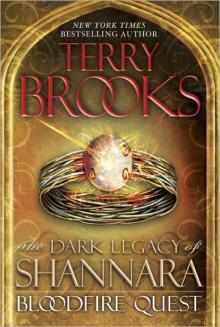 The Bloodfire Quest
The Bloodfire Quest The Hook (1991)
The Hook (1991) Star Wars: Episode I: The Phantom Menace
Star Wars: Episode I: The Phantom Menace Street Freaks
Street Freaks The Sword of Shannara & Elfstones of Shannara
The Sword of Shannara & Elfstones of Shannara The Magic Kingdom of Landover , Volume 1
The Magic Kingdom of Landover , Volume 1 The Phantom Menace
The Phantom Menace Unfettered
Unfettered Allanon's Quest
Allanon's Quest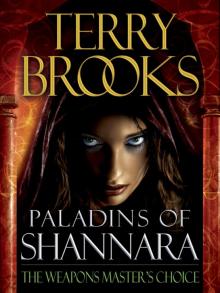 Paladins of Shannara: The Weapons Master's Choice
Paladins of Shannara: The Weapons Master's Choice Terry Brooks - Paladins of Shannara - Allanon's Quest (Short Story)
Terry Brooks - Paladins of Shannara - Allanon's Quest (Short Story) Star Wars Episode I: The Phantom Menace (star wars)
Star Wars Episode I: The Phantom Menace (star wars) Warrior (The Word and the Void)
Warrior (The Word and the Void) Word & Void 03 - Angel Fire East
Word & Void 03 - Angel Fire East![[Magic Kingdom of Landover 05] - Witches' Brew Read online](http://i1.bookreadfree.com/i2/04/05/magic_kingdom_of_landover_05_-_witches_brew_preview.jpg) [Magic Kingdom of Landover 05] - Witches' Brew
[Magic Kingdom of Landover 05] - Witches' Brew The Magic Kingdom of Landover - Volume 2
The Magic Kingdom of Landover - Volume 2 The Measure of the Magic
The Measure of the Magic The First King of Shannara
The First King of Shannara Sometimes the Magic Works
Sometimes the Magic Works The Sword of Shannara, Part 2: The Druids' Keep
The Sword of Shannara, Part 2: The Druids' Keep The Sword of Shannara tost-1
The Sword of Shannara tost-1 Paladins of Shannara: The Black Irix (Short Story)
Paladins of Shannara: The Black Irix (Short Story) Tangle Box
Tangle Box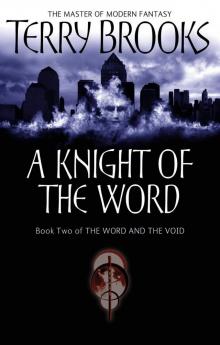 Word & Void 02 - A Knight of the Word
Word & Void 02 - A Knight of the Word The Sword of Shannara, Part 1: In the Shadow of the Warlock Lord
The Sword of Shannara, Part 1: In the Shadow of the Warlock Lord The Wishsong of Shannara tost-3
The Wishsong of Shannara tost-3 The Elfstones of Shannara tost-2
The Elfstones of Shannara tost-2